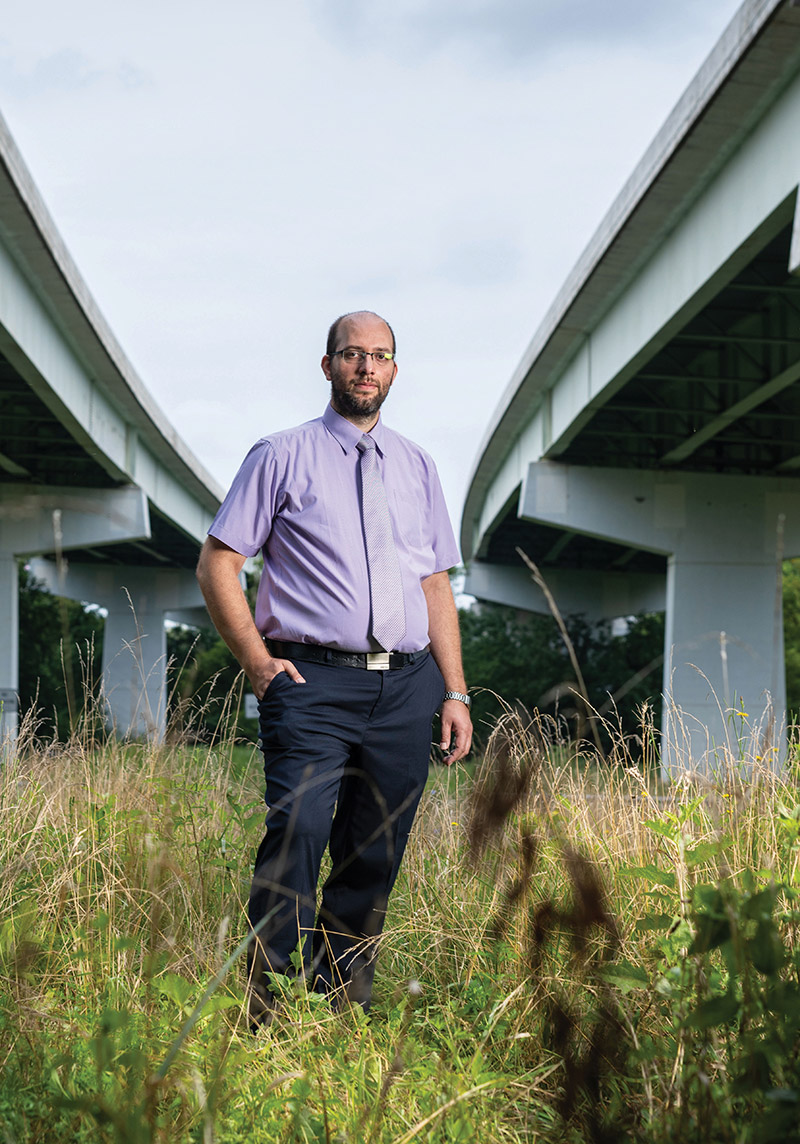 “It’s better to fail doing something hard than to do something easy very well.”
“It’s better to fail doing something hard than to do something easy very well.”
That mindset, combined with a strong belief that you can only truly learn by doing, grounds the teaching philosophy of Martin Takáč, an assistant professor of industrial systems and engineering.
In May, Takáč received the inaugural Richard P. Vinci Award for Educational Excellence. The award pays tribute to the late professor of materials science and engineering who died in March of ALS.
Takáč is an expert in machine learning and designs efficient algorithms for solving large-scale optimization problems. His courses in operations research, optimization, computing, and analytics are heavily project based, he says.
“It’s about teamwork. Students will sometimes tell me how hard it is to work in teams of four, and that they’d prefer teams of two. I want them to experience the fact that teamwork is sometimes difficult, but you have to learn how to manage it. You have to talk to each other, or you’ll fail. When you go out into the workplace, you have to know how to extract the strongest skills from each person and collaborate as a group.”
Takáč says that what ultimately happens about midway through these projects—difficult, open-ended optimization problems—is that students become more and more comfortable straying from their comfort zone. They share ideas, listen to the feedback from teammates, and realize they all bring different strengths to certain problems.
It isn’t easy designing such projects, but Takáč hopes students will take from them the things he has come to value as a researcher in the field of optimization.
“I have always been driven by collaboration and the creativity of others,” he says. “Trying to solve these problems by bridging fields and working together helps us all progress.”
Examples of that collaborative ethos are evident in Takáč’s research. Recently, he teamed up with Nader Motee, an associate professor of mechanical engineering and mechanics, to study how multiple homogeneous agents (i.e., drones) collaborated to perform a classification task.
The agents each individually explored and observed a given environment, then communicated with each other to update their beliefs. The team found that coordination and cooperation between the agents could be optimized using a multi-agent reinforcement learning (MARL) framework, which allowed the agents to more correctly classify an environment. The potential implications are widespread, from healthcare to industrial automation to military and police support.
“If drones could talk to each other and relay just enough information, they could, for example, find a lost kid in the forest. One drone might identify footprints and tell another drone, ‘Hey, go search over there,’” says Takáč. “Transmitting too much information takes too much time, so you want them communicating just enough to get the job done.”
Together with Shamim Pakzad, an associate professor of civil and environmental engineering, Takáč introduced convolutional neural networks (CNN) as a solution to the problem of detecting and localizing damage or deterioration of structural systems such as bridges. The team found that CNN architecture led to greater accuracy, robustness, and computational efficiency.
It’s exciting work, says Takáč. He enjoys the complexity of problems as well as the chance to contribute different approaches to solving them.
“And you’re working on these problems alongside some of the top researchers in the world,” he says. “What’s not to like?”
Ultimately, however, it’s fulfilling work. He believes machine learning can make life both easier and safer. And he enjoys challenging his students to do “something cool” with it.
“Pick a hard problem that you’ll fail for sure,” he says. “Because you will learn a lot.”
